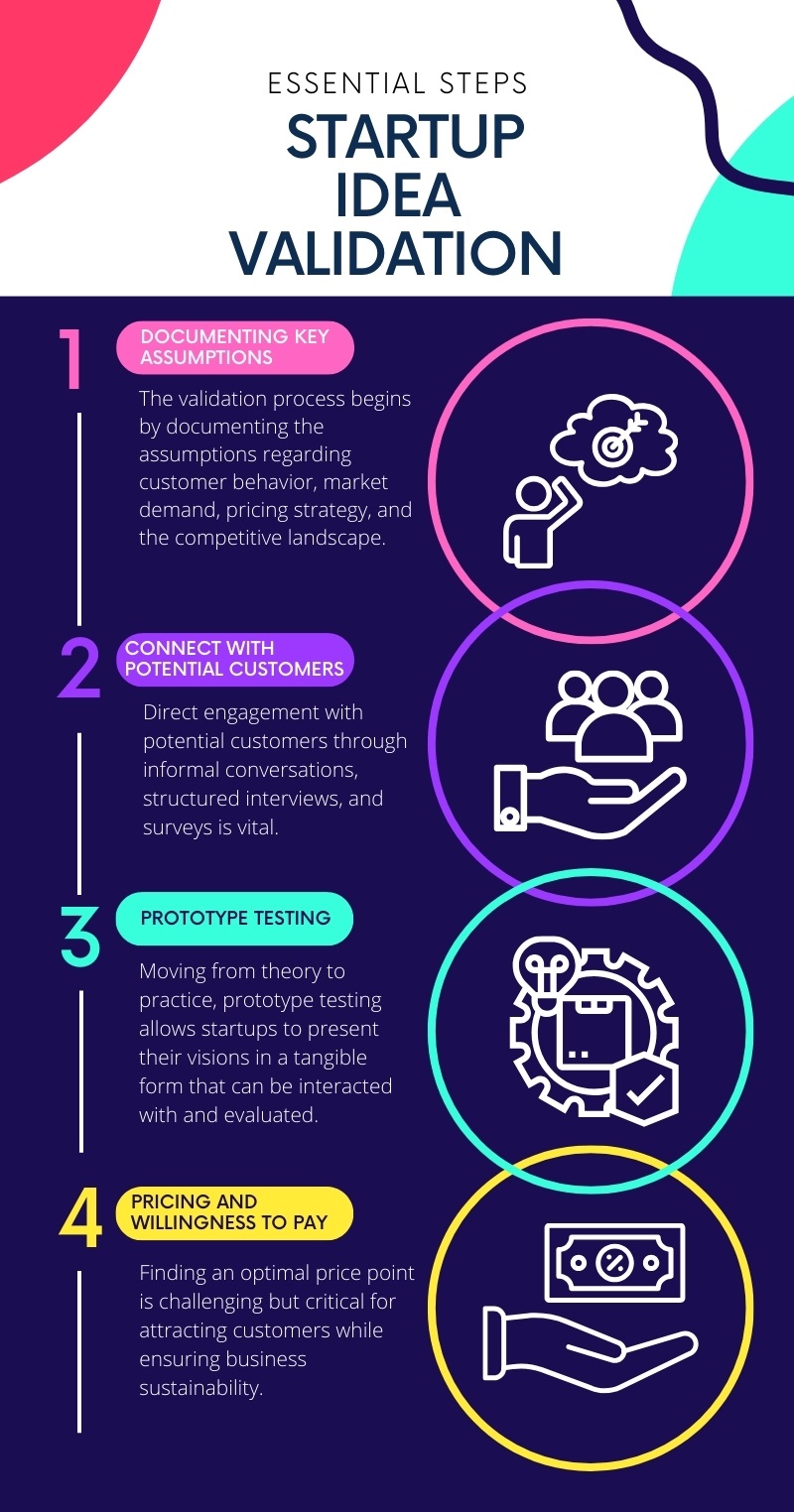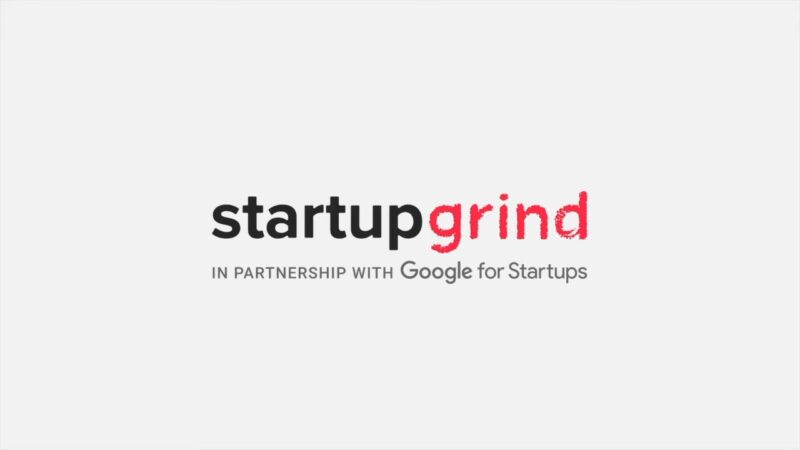Market validation is the critical first step for any startup, serving as the litmus test for the idea’s potential success in the real world. Validating your startup idea is a process that demands both creativity and analytical rigor, blending customer feedback with market data to refine your startup’s strategy.
With 34% of startups failing because of the lack of product-market fit, the importance of thorough validation cannot be overstated.
Let us talk about how this process should be conducted.

Table of Contents
ToggleEssential Steps for Startup Idea Validation
First, I will guide you through the steps of validation.
Document Key Assumptions

Documenting key assumptions is an initial step in the validation process of a startup idea, serving as the foundation upon which all subsequent validation efforts are built. It revolves around cataloging the fundamental hypotheses underlying the business concept, its envisioned target market, and the distinct value proposition it purports to offer.
The process begins with brainstorming, where founders present their vision for the product or service, identifying assumptions related to:
- Customer behavior
- Market demand
- Pricing strategy
- Competitive landscape
Each assumption is a statement that needs to be tested against real-world data to ascertain its validity.
For example:
A startup might assume that there’s a significant demand for a new fitness app among working professionals aged 25 to 34.
This is an assumption that will later need to be verified through various factors, like market research, surveys, and other validation techniques.
Engage with Potential Customers

Engaging with potential customers stands as a cornerstone in the process of validating a startup idea, embodying the principle that direct feedback from the target market is invaluable. Here are some of the factors you should take into consideration:
| Step in the Process | Description |
|---|---|
| Identifying Potential Customers | Deep dive into market segment’s demographics, psychographics, and behaviors. |
| Choosing the Method of Engagement | Select engagement method based on identified customer profiles. |
| Conversations | Informal discussions in settings frequented by potential customers. |
| Structured Interviews | Formal discussions to deeply understand customer experiences and needs. |
| Surveys | Collect broad data on market trends and customer preferences. |
| Purpose of Direct Engagement | Validate assumptions about customer needs and problems with current solutions. |
It’s a reality check that either confirms the startup’s hypotheses or sends it back to the drawing board.
Prototype Testing

Prototype testing is a crucial phase in the lifecycle of a startup, marking the transition from theoretical ideas to practical, tangible solutions.
By creating a prototype or Minimum Viable Product (MVP), startups can transform their visions into a form that can be interacted with, evaluated, and improved upon based on real-world usage and feedback.
This step is fundamental in the iterative process of product development, where the goal is to refine and evolve the offering until it closely aligns with the needs and expectations of the target market.
Pricing and Willingness to Pay

Determining the optimal price point for a new product or service is an extremely hard yet crucial aspect of a startup’s road toward market success. It straddles the fine line between enticing customers to buy and ensuring the business can sustain itself financially.
Probably the best thing to do here is to test out different prices and see how the market will respond. The right pricing strategy not only reflects the value of the product but also aligns with the target market’s willingness and ability to pay.
Finding the right balance requires a combination of analytical research and an intuitive comprehension of customer perceptions, for it to bear fruit.
Market Validation Frameworks
Now let us take a look at some of the best-known market validation frameworks.
1. Harvard Business School Market Validation

Harvard Business School’s five-step market validation process is a beacon for startups seeking market fit. This framework guides founders through:
- Setting clear goals
- Market size
- Search volume for interest gauging
- In-depth customer interviews
- Product testing
This structured approach underscores the necessity of building a solid foundation of market knowledge before scaling, thereby minimizing the risks associated with misjudging market demand.
2. Lean Market Validation

Lean market validation advocates for the rapid testing of assumptions. This approach, which pivots on engaging directly with potential customers and iteratively refining the product based on their feedback, is vital for startups aiming to adapt swiftly to market demands.
3. The Startup Grind Methodology

With a sharp focus on validating the problem before the solution, the Startup Grind Methodology positions itself as a cost-effective way for startups to ensure their product addresses a genuine need.
This framework encourages founders to learn about problem identification, gauge its significance, explore existing solutions, and consider budget implications for their proposed solution, fostering a more focused and market-driven product development process.
4. Arnab Ray’s Startup Validation Framework

Arnab Ray’s framework offers a visually driven approach, enabling founders to map out the potential, strengths, weaknesses, and risks associated with their startup idea.
This method encourages a comprehensive view of the startup’s position in the market, highlighting areas for improvement and growth, and ensuring that founders have a balanced understanding of their venture’s prospects.
5. The Failory 4-Step Framework
Failory’s framework is about action, and as its name says, it focuses on four main steps:
- Defining pre-selling goals
- Crafting a minimum viable offer
- Engaging in pre-selling activities
- Analyzing the results
This hands-on method validates the startup idea by directly testing market receptiveness, providing invaluable feedback for refinement.
The Bottom Line
Validating your startup idea is something you cannot go around. Therefore, it is of the utmost importance to take it as seriously as possible.
I am sure this guide will provide you with enough helpful insights to make the process as straightforward for you as possible.











